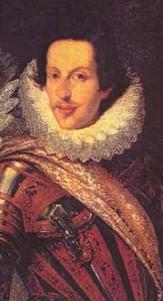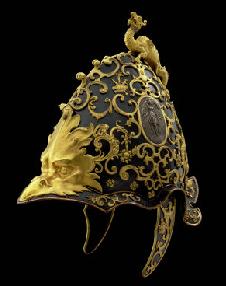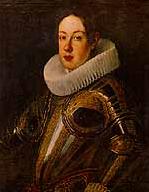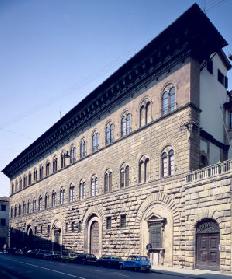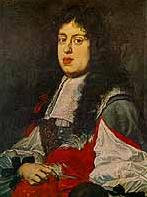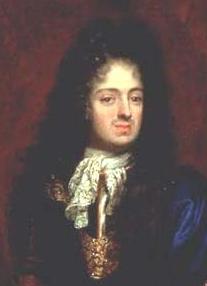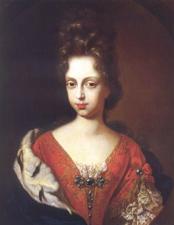
Candida Martinelli's Italophile Site

Main
Page This family-friendly site celebrates Italian culture for the enjoyment of children and
adults. Site-Overview
Visit my Italian History pages
Notes:
In the course of my research I came across an amazing
on-line archive of de' Medici
papers run by the Getty Museum called the Medici Archive Project.
Search the archive for people
and places from Grand Duke Cosimo onward and you get mention of them in everything from a de' Medici
shopping list to a thank-you note.
Instead of hearing about the
family from me or others, you can read their own words or words they
read in their lifetime. It brings you very close to these
interesting people, offering an insight into their lives and relations.
The site has a very interesting
page that discusses the inter-linked relationship between the
de' Medici and
Italian Jews.
And especially fascinating is a
list of
interesting items with analysis by the Getty historians.
On the death of his father Ferdinando I, Cosimo II de' Medici (1590-1621) became Grand Duke of
Tuscany in1609 at the age of 19.
Perhaps his father didn't have time to teach him the facts of the de'
Medici life, such as the family wealth coming from the family bank.
Whatever the reason for his ignorance, Cosimo II's first act was to
claim
that banking and business were degrading activities for a prince, and he
shut down all the de' Medici businesses, causing an economic recession
in Florence, and eventually one within the family. He also
managed to alienate the Florentines in that one stroke.
Cosimo II
By this point in time, the de' Medici family had grown considerably,
many were married and
had children, and most lived at home, so they needed more living space.
During his short
life time, Cosimo II did manage to have Palazzo Pitti expanded. He
also maintained the fleet his father had assembled, but generally avoided
foreign military adventures.
Cosimo II was
interested in science, like
his uncle before him, and like his children after him. This is not
unusual, as this was dawning of the new scientific age.
Cosimo II had a glass factory built
in the Boboli Gardens behind the Palazzo Pitti where he and his sons
played designer for the Venetian glass blowers who worked for them each
summer when the Venetian factories were closed.
He named
Galileo, who was escaping from the Inquisition in Padua, as his court philosopher and mathematician.
Cosimo II's father, Ferdinando, had hired Galileo to tutor his children
part of the year, so he was known to Cosimo II. You can read more
about this at the
Medici Archive
that quotes document requesting payment for Galileo's services.
Cosimo II's portraits have the Elizabethan foppish look about
them, but this could be do to his continual poor health. Even his battle helmet looks only for show.
Cosimo II Helmet
His home life was also very unpleasant because of continual political
battles between his Austrian wife and his French mother. Things
didn't improve when Cosimo II followed his wife's
advice and lost Tuscany its independence to the Spanish, Austria's ally.
Cosimo II died at the young age of 31 in 1621.
Ferdinando II de' Medici (1610-1670),
became Grand Duke of Tuscany in name only, on the death of his father in 1621. Ferdinando
II was only 10 years old, so his
mother and grandmother were named his Regents.
It was a difficult
time for Italy and for Florence. The wealth and international
prestige of Italy, and the de' Medici had fallen. There were
famines and illnesses that hit Florence regularly.
The two foreign
women made all the important decisions for 7 years, when they managed to have
Ferdinando II named full Grand Duke in 1627 at the age of 17.
A young Ferdinando II de' Medici, you can see the resemblance to his
father, above
Just because he was officially Grand Duke didn't mean
Ferdinando II was free to make his own decisions. The two women
continued to rule from behind the scenes.
The result was that their
interests in religious institutions and luxuries for their Palaces were
indulged. But because of his father's decision to close the de'
Medici bank, the family was running out of money.
Ferdinando
wasn't very bright, but his heart was said to be in the right place.
He worked hard under difficult circumstances, and earned the admiration
of his subjects. He had greater success after his mother died,
when he was free to rely on his other family members for help without her
interference.
His brothers were of great help to him, especially
Cardinal Leopoldo,
considered the genius in the family, if a bit wild. They were all
great collectors of art, expanding the family's artistic inheritance.
But Ferdinando II's wife, Vittoria della Rovere,
influenced him greatly. Many blame her for unnecessary
spending of money they didn't have.
Whether this was true or not, the result was that taxes were repeatedly raised in the Grand Duchy to pay for
everything.
Vittoria della Rovere had lost her inheritance of the land
linked to
the Duke of Urbino. However she did manage to keep all the
artwork belonging to the Dukedom. Many of these works are now to
be seen in Gli Uffizi Galleries in Florence.
Ferdinando II resorted
to purchasing
territory to expand his estates. He added some to the
decorations of Palazzo Pitti with stucco work, frescos and paintings.
But his great passion was science.
Ferdinand II
Ferdinando II's tutors had been Galileo and
Torricelli and Viviani. He founded an experimental science
academy, and supported the one set up by his brother Leopoldo, the first
of it's kind in Europe. He personally did work with thermometers,
and encouraged advances in meteorology, agronomy and botany.
In 1654 Ferdinando II created what he called the
Florentine Network. It was a meteorological service
throughout Europe, the first of it's kind anywhere. He distributed
meteorological instruments throughout Europe and had people take regular
readings, entering them into registers. Data was collected for 13
years in Florence, Vallombrosa, Cutigliano, Bologna, Parma, Milan,
Paris, Innsbruck, Osnabruck and Warsaw.
But
Ferdinando II wasn't influential enough to save Galileo from the Inquisition,
although he did testify in Galileo's defense at the trial, and took care
to make Galileo comfortable during his house arrest that ended in the
great scientist's death in 1642.
The Palazzo Medici had returned to the family through
marriage to the Hapsburgs. It was expanded over the years by the
de' Medici family, but for financial reasons, Ferdinand II sold it to the Riccardi family in 1659, hence it's current name:
The Medici-Riccardi Palace. Today it's owned by the Florentine
government and used for exhibitions.
Palazzo medici-Riccardi
Cosimo III de' Medici (1642-1723), became Grand Duke of Tuscany in 1670
on the death of his father at the age of 60.
Cosimo III, an over-fed,
spoiled, indulged child, was unusually dependent on his mother, Vittoria della Rovere,
who encouraged his religious interests to the point of fanaticism.
The results were moral laws throughout the Grand Duchy that made it the
laughing-stock of Europe. One edict had all naked statues removed
from public view, including Michelangelo's David, the symbol of
Florence. Some said the time of Fra' Savonarola had
returned. Together with morality laws, he
instituted bigoted laws aimed at non-believers and those of non-Catholic
faiths.
His mother helped ensured the demise of his
marriage to beautiful, extraverted Marie Louise d'Orleans, a cousin of France's
sun-king Louis XIV, by turning Cosimo against his wife in all things,
and encouraging his odd beliefs such as sleeping with his wife no more
than once a week under a doctor's supervision!
His wife was in love with her cousin, and hated her dour husband. She eventually fled back to France, leaving her children in a decidedly
bad environment. The boys especially did not fair well, and ended
badly.
Florentines say the worst thing about Cosimo III's reign
was that it lasted 53 years.
The best thing about his reign, according to other
courts in Europe, was his secret recipe for a chocolate paste used to
make hot chocolate.
Cosimo III had the recipe developed by his court
scientists to rival the Spanish chocolate paste flavored with vanilla,
musk and amber. Cosimo III's concoction was preferred everywhere and sent to the
European courts as gifts. On the death of Cosimo III's son, the recipe
became public. It was flavored with jasmine, vanilla,
cinnamon and ambergris. The jasmine flavor came from the
jasmine flower itself, not an extract.
Cosimo III neglected the sciences and quality art, leading to an
exodus
of scientists and artists from Florence.
He did expand the collections in Gli Uffizi with
objects trendy with wealthy families at the time, antiquities and
curious objects.
He also had decorations added depicting religious
celebrations in Florence and honoring the high morals of the Grand
Dukes. This is ironic, since it is the low morals of himself and
his sons that
brought the de' Medici control of the Grand Duchy to an end.
Cosimo III de' Medici
Hopes for the renewal of the de' Medici family rested on
Cosimo III's
son, Ferdinando III, who had the intelligence and artistic tastes to
continue running the Grand Duchy, filling the estate at Poggio a Caiano
with artwork.
Ferdinando, looking oddly like David Niven in a Hollywood costume movie
But Ferdinando III led a licentious life. He married a
child of 16 but fathered no children. He preferred whoring his way around
Italy. His infertility could have been due to the syphilis
he got from the prostitutes. He went mad from
the disease, and died before his father. Ferdinando lived from 1663 to
1713, dying at the age of 50.
Even before
Cosimo III died at the old age of
80, he tried to make is only surviving son suitable to take his title.
Gian Gastone had been neglected up to this point, being a second son
of a wacko father and with no mother.
He had been left much on his own. He suffered what seemed to be a bi-polar
character, and he nurtured his natural interests in botany and boys.
His homosexuality was obvious from a young age, but this didn't stop his
sister and father from arranging his marriage to an Austrian princess and
encouraging them to conceive a child to save the dynasty. It never worked,
and neither did
the marriage.
His depressions became worse, he increased his
drinking, gambling and sexual encounters with boys. Eventually he
left his wife in Austria and went back to Florence.
Gian Gastone de' Medici
(1671-1737), became Grand Duke of Tuscany
in 1723.
He took over the Grand Duchy as a
confirmed, gay bachelor.
Gian Gastone de' Medici
Gian Gastone immediately set up a committee to decide
on who would take the Grand Duchy after his demise. This process
lasted decades, and wasn't really decided until several years after his
death.
Gian Gastone removed many of the oppressive laws his father
had instituted in the Grand Duchy, and lowered taxes and prices on
staple goods.
This won him popular support, which is probably why they let him remain
in his office until his death. Because very soon his worst
instincts took over.
Gian
Gastone spent much of his life indulging in all his illicit whims, neglecting his duties as Grand Duke,
and neglecting his estates and the artwork under his protection.
He was, to say the least,
an embarrassment to Italy, Tuscany, Florence and the de' Medici.
Gian Gastone turned into
an obese glutton, and gay pedophile who had his courtiers procure him
young boys with which to amuse himself. He also indulged in voyeurism of
his purchased boys with prostitute, courtier women.
The last years
of his life were spent ill, in a fetid bed that was cleaned only when his
sister-in-law could manage to get him removed from it, which wasn't very
often.
One of the few honorable things that happened under his Dukedom was the
financing of a
tomb and monument for Galileo in the Church of Santa Croce.
When Gian Gastone died in 1737 at the age of 56, the
Grand Duchy of Tuscany was offered to Francesco
Stefano di Lorena, related by marriage to the de' Medici, and taken up
by his son, Pietro Leopoldo di Lorena.
Oddly, Gian Gastone's body is missing
from his tomb. It was moved a century after his
death for some unknown reason to the secret crypt under the Medici
chapel.
The de' Medici reputation was saved at the end of
the day, as was the de' Medici art, by the
Grand Duke's sister, Anna Maria Luisa de' Medici, below, who was the very last
de' Medici. She lived an exemplary life, if we ignore her part in
marrying her gay brother off to an unwilling young woman.
Anna
Maria Luisa de' Medici
She returned to her beloved
Florence after the death of her German husband (who had given her
syphilis), and was welcomed home by her pampering
father. After her religiously fanatical father's death, she lived
a separate life
from her wayward brother, Gian Gastone, in the Palazzo Pitti.
She outlived Gian
Gastone, and before the end of her life, negotiated with the di Lorena family a contract called the
'Convention of the Family'. With this contract she entailed all the de' Medici art to the city of
Florence as long as the artistic objects
never left the Grand Duchy.
Anna Maria Luisa de' Medici died in 1743 of breast cancer, the
last de' Medici.
In 1769, Pietro Leopoldo opened up Gli Uffizi
collections to the public, and supervised their organization into a
world class collection.
The di Lorena family left only in 1859 when it
realized that the Grand Duchy was to be taken over by the new
Kingdom of Italy (1861) under the House of Savoy.
Palazzo Pitti
became the royal seat for the Savoy until their definitive more to Rome.
After WWII, Italians voted in a referendum to end the monarchy, and
members of the House of Savoy were banned from Italy until very
recently. The vote also ended all royal claims in Italy, and the
use of royal titles.
Cosimo the Elder was correct in his assessment of his family's lasting
effect on Florence and Tuscany.
The buildings and art are what
represent for us today the de' Medici dynasty. Forgotten are: What remains are the
churches, the palaces, the country villas, the frescos, the sculptures
and
the paintings.
The de' Medici financed and fuelled the Italian Renaissance.
They
were patrons to generations of Italian artists and architects.
So
the next time you're in Florence and Rome enjoying the art and architecture,
spare a thought for the people who
made all that possible.
Decadent, violent, despotic, crafty,
cunning, bullying, clever, indulgent: the de' Medici Princes of Italy.
Visit the Wikipedia
Medici page for more
on the family, the art, buildings, history...
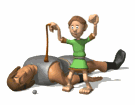
The
de' Medici Dynasty
![]()
The family's history parallels
Italy's history. I've divided it into sections listed in the left
column.
This concise history is a helpful guide to read before
traveling to Florence and the Vatican.
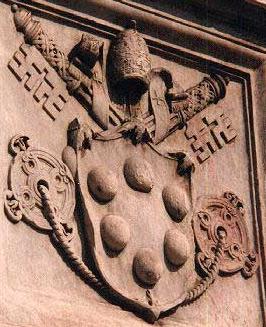
The de' Medici Dynasty and Italian History
The Late-Middle-Ages, Early Renaissance, Giovanni: The Founder
The Early Renaissance, Cosimo and Lorenzo: The Elders
The High Renaissance, Piero and his son, Lorenzo the Magnificent
Florentine Independence and the End of the
Florentine Renaissance, Piero II and Lorenzo II in Exile
The Roman Renaissance, Cardinal Giulio de' Medici and Pope Leo X
(Giovanni de' Medici)
The End of Florentine Independence, Pope Clement VII (Giulio de' Medici), Alessandro, and
Caterina de' Medici
The Late Renaissance, The Grand Duke and Duchess of Tuscany: Cosimo de' Medici
and Eleonora di Toledo
The Age of Discovery, Francesco and Ferdinando: Two Very Different Brothers
The Age of Reason and The Enlightenment, The Decline of de' Medici Reason and Enlightened
Governance
The Age of Reason and The Enlightenment
The Decline of the de' Medici
Reason and Enlightened
Governance
